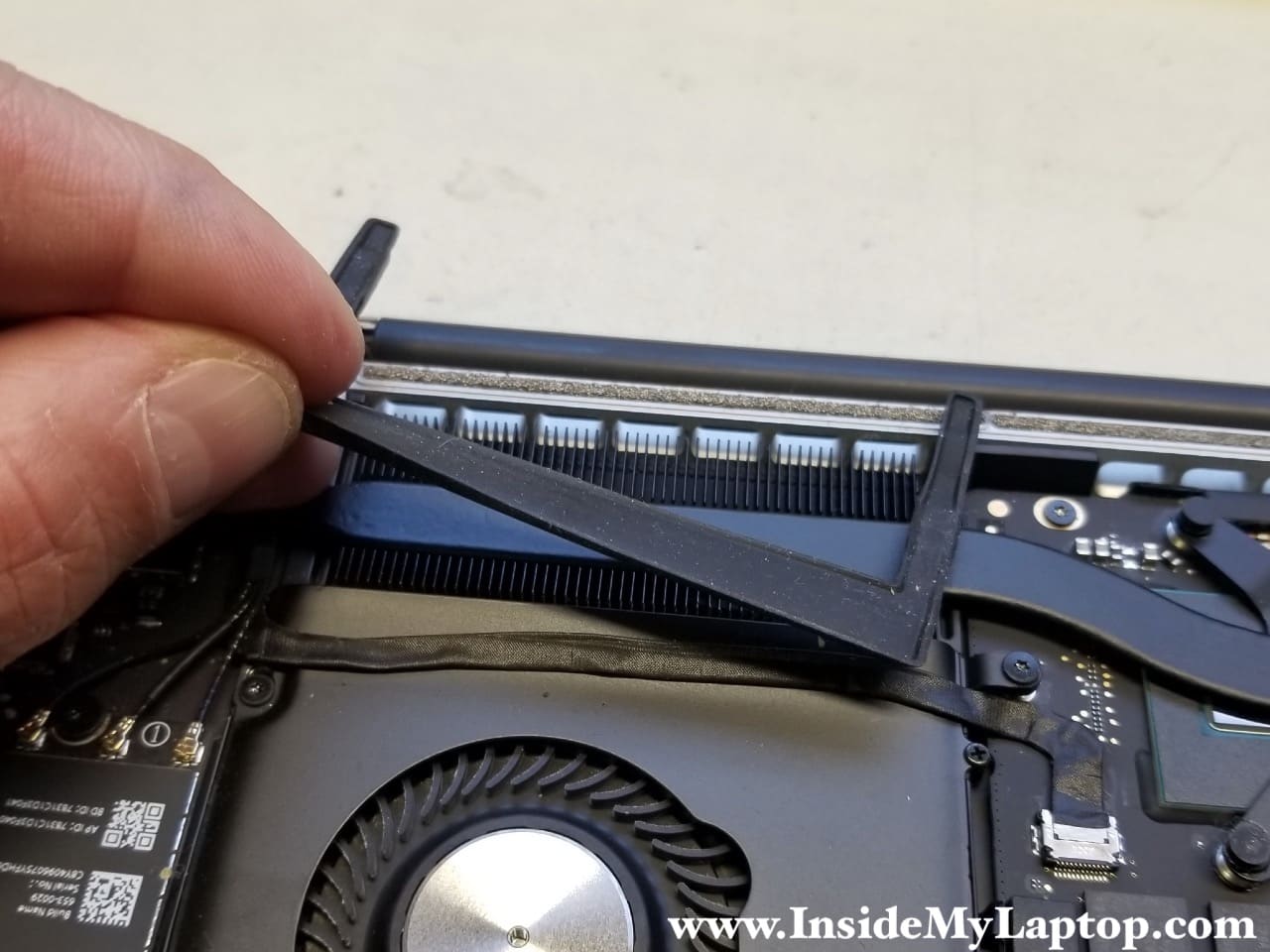

I then carefully remove the hinge screws. After carefully scooting the machine back just until the display makes contact with the edge of the table, I pull the display up toward me to open it fully. I flip the machine back over and rotate it 90 degrees so that the ‘Apple’ logo on the back of the display lid is facing me, inverted, and the display hinges are much closer to me. I thoroughly brush off the surface area of the ESD mat where I am going to situate the MacBook for the next step, and then flip it over and open the display 90 degrees. I loosen all of the rest of the screws and then tighten them back down just until the screws stop turning (without torquing them). I move the loop out of the way and reinstall the two screws just until the heads of the screws make contact with the metal surface of the hinge. I do the same thing when reconnecting the cable, but I ‘walk’ it back as mentioned above with the eDP cable connector.Īlso, once I have removed the clutch covers, I remove the two screws holding the metal antenna grounding loop in place (first picture in Step 15 of your guide). For reassembly, I line up the connector carefully and once the pins are all lined up and the cable connector partially inserted, I push on the back edges on either side of the connector with the pointed ends of two spudgers, ‘walking’ the connector back into place so that it is even on both sides.Īlso, when disconnecting the camera cable connector from the logic board, I use the same method as above, situating the points of the sticks into the notches on each side of the connector and pushing straight back vs walking it back. This prevents any stress to the locking bar and also helps to ensure that the connector is disconnected evenly.


By doing this, you make it easier to feel that each screw has been started properly, and is not “cross-threaded”.Įxcellent guide, Andrew! I am an ACMT and when disconnecting the eDP cable, I like to use the pointed ends of two spudgers (Apple calls them ‘black sticks’) to push the connector straight back out of the socket by pushing on its edges. After all the screws have been started, then go around and finish tightening all of them. When replacing the bottom cover, it is a good technique to insert and BEGIN tightening all ten screws BEFORE fully tightening any one screw. Don’t attempt to clean the Loctite from the screws - leave it in place, and it will continue to help prevent the re-inserted screws from working loose. This is to help prevent the screws from working loose and falling out. It’s important to put the two screws with no shoulder at the hinge of the cover.Īll ten screws require a P5 Pentalobe screwdriver, preferably with a magnetized tip to help hold and position the screw.Īll of the screws have blue “Loctite” thread locker compound on their threads. Note that the eight 3mm screws have a shoulder under the head, while the two 2.3mm screws are “full thread”, i.e., there is no shoulder under their heads.


 0 kommentar(er)
0 kommentar(er)
